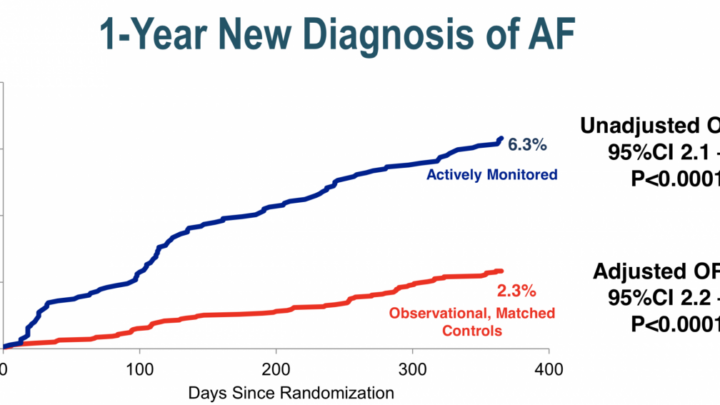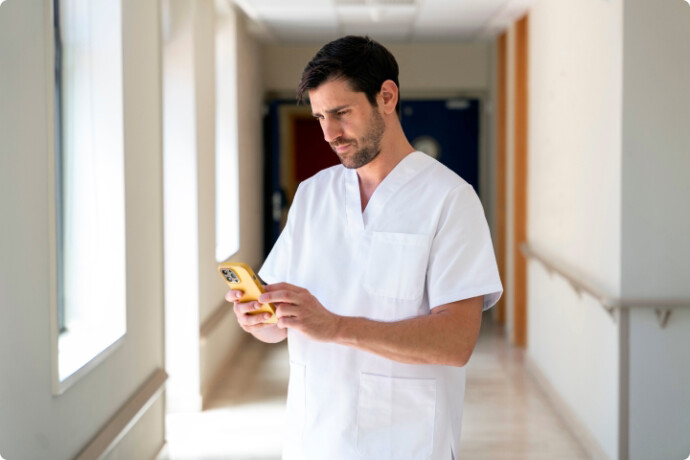
Antibiotic resistance is no longer a distant threat — it’s a global medical emergency demanding urgent action, warns an Internal Medicine physician on Sermo: “We must tackle this now, before it consumes us all.”
Antimicrobial resistance (AMR) is one of the most pressing global health challenges. If left unchecked, it’s projected to cause 10 million deaths annually by 2050 and could cost the world economy between $60 trillion and $100 trillion in lost output. The economic burden is staggering, AMR is estimated to reduce global GDP by 2% to 3.5% within the next few decades.1
Physicians stand at the frontline of this crisis, tasked with making treatment decisions that balance immediate patient care with long-term public health implications. How can healthcare professionals (HCPs) combat antibiotic resistance while ensuring patients receive the treatment they need today? What strategies are most effective in reducing AMR without compromising patient outcomes?
In this article, we explore Sermo poll data and physician discussions to uncover the most effective solutions, from stewardship programs and emerging technologies to global collaboration and patient education.
How can physicians balance immediate treatment with long-term antibiotic resistance prevention?
H3: Physicians often face difficult prescribing decisions when treating bacterial infections.
According to a study, 46.7% of physicians report difficulty choosing the correct antibiotic,2 underscoring the need for better diagnostic tools and prescribing guidelines. To this end, in a recent Sermo poll, 63% of surveyed physicians believe that antibiotic stewardship programs are essential in achieving this balance.3
Antibiotic resistance stewardship programs ensure antibiotics are prescribed only when necessary, optimizing treatment and preventing unnecessary use. These programs involve:
- Guiding physicians in selecting the most appropriate antibiotic for each case.
- Tracking prescription trends to prevent antibiotic resistance through overprescribing and misuse.
- Integrating rapid diagnostics to confirm bacterial infections before prescribing.4
Diagnostic tools play a crucial role in reducing unnecessary antibiotic use. Physicians on Sermo highlighted how these tools enhance stewardship:
- 33% said rapid diagnostics ensure appropriate use.
- 24% emphasized that accurate tests minimize unnecessary prescriptions.3
As an Internal Medicine physician on Sermo explains, “We start the patient on recommended antibiotics and then may change it depending on culture results and infectious disease specialty recommendations.5”
Antibiograms, which provide bacterial resistance patterns,6 can improve precision in prescribing. However, their delayed results mean that empirical treatment often starts before testing is complete. As a Pediatrics Sermo member explains, “The use of an antibiogram to determine the specific antibiotic against the germ is ideal, but because its result isn’t immediate, antimicrobial treatment is generally started empirically until the result of the antibiogram is obtained.7”
Stewardship must go beyond prescribing practices to include education and prevention:
- 14% of physicians advocate for patient education on completing antibiotic courses.
- 9% emphasize the need for R&D investment in alternative treatments.
- 3% highlight the role of vaccinations, hygiene and infection control in reducing antibiotic demand.3
The key takeaway is that balancing immediate treatment with long-term resistance prevention requires a multifaceted approach, one that combines smart prescribing, rapid diagnostics, ongoing surveillance and patient education.
Emerging technologies and innovative therapies
While stewardship programs help preserve antibiotic efficacy, new technologies and alternative treatments are needed to combat resistant infections.
One of the most discussed alternatives is phage therapy, with 30% of Sermo physicians highlighting its potential.3 This approach uses bacteriophages to target and destroy bacteria, offering a precise method to combat infections without contributing to resistance.
However, challenges remain. “Phage therapy offers an alternative to antibiotics by using bacteriophages to destroy bacteria, but faces specificity and regulatory challenges,3” notes the Sermo Team. Unlike broad-spectrum antibiotics, phages must be tailored to specific bacteria, making widespread application difficult.8
Similarly, CRISPR-Cas technology, supported by 21% of respondents,3 could provide a revolutionary way to edit bacterial genomes and remove resistance genes. Yet, as one discussion on a Clinical Pulse post pointed out, “Genomic technologies and CRISPR offer exceptional precision in editing bacterial genomes, potentially disabling antibiotic resistance genes and preventing the spread of resistance,3” but their implementation faces hurdles such as off-target effects9 and effective delivery mechanisms.10
Elsewhere, probiotic and gut health interventions were proposed as a preventive measure. “Integrate pre and probiotics into our healthcare system to boost gut health and strengthen immunity,11” suggested a Plastic Surgeon on Sermo.
While these emerging treatments and new technologies offer promising alternatives, they require significant investment, regulatory approval and clinical validation before becoming mainstream. The challenge remains in bridging scientific potential with real-world application, a critical step in ensuring these innovations reach patients in need.
Global collaboration and healthcare resilience
Antibiotic resistance isn’t just a local or hospital-based issue; it requires global cooperation to track resistance trends, promote education and enforce responsible antibiotic use.
When asked how healthcare systems can become more resilient to AMR, Sermo physicians responded:
- 39% emphasized the importance of educating HCPs and the public about responsible antibiotic use.
- 27% supported enhancing global surveillance to monitor antibiotic resistance trends.
- 13% highlighted fostering international collaboration to share data and best practices.
- 11% advocated for improving infection control in hospitals and communities.3
One major barrier to stewardship and accurate prescribing is access to antibiogram data, especially in low-resource settings.
“The reporting of the antibiogram by hospital laboratories is necessary and helps a lot, especially for those patients who don’t have the financial resources to perform them in another laboratory,5” argues a Urologist on Sermo,
Yet, antibiograms alone aren’t a magic bullet, and one Obstetrics physician on Sermo believes that “AMR is a huge problem. An antibiogram is one tool—truly helpful, but not in itself a magic bullet.5”
Therefore, global collaboration should focus on standardizing data collection, increasing funding for AMR research, and improving antibiotic access in lower-income regions.
How can doctors reduce antibiotic resistance?
Beyond stewardship programs and innovation, physician-patient communication plays a crucial role in reducing antibiotic misuse.
When asked how physicians can educate patients about responsible antibiotic use, Sermo members emphasized:
- 48% said sharing clear, simple facts about antibiotics and resistance is the most effective strategy.
- 16% recommended promoting local Q&A sessions to address patient concerns.
- 15% suggested providing handouts on safe antibiotic use.
- 10% emphasized incorporating antibiotic education into routine appointments.3
One recurring concern is the misuse of antibiotics due to a lack of awareness. As a GP on Sermo argues, “Doctors must be aware of antibiotic management beyond knowledge, as not all centers have an infectious disease service to create proper protocols.1”
Physicians can also highlight the role of vaccines in reducing the need for antibiotics.
As the AMR Core-Group Chair, Dr. W Nyamayaro, states, “We must use all the tools in the box. There’s no single magic bullet, but vaccines are one of those tools.7”
By empowering patients with education and physicians with guidelines, HCPs can reduce unnecessary antibiotic prescriptions and slow resistance development.
Your takeaway
So, how can doctors prevent antibiotic resistance?
One Family Medicine physician on Sermo sums it up: “Antimicrobial resistance today is a problem for humanity and for medical practice since the worldwide incidence of microbial resistance is high.7”
Antibiotics and antibiotic resistance is a complex but solvable issue. By implementing stewardship programs, embracing new technologies, strengthening global cooperation and educating patients, physicians hold the power to slow AMR.
Physicians must act now to preserve the effectiveness of antibiotics for future generations.
Join the conversation on Sermo
Antibiotic resistance is a growing challenge, but physicians hold the power to drive change.
On Sermo, thousands of medical professionals are sharing real-world insights, discussing emerging therapies, and collaborating on best practices to combat resistance effectively.
Footnotes
- Review on Antimicrobial Resistance, 2014. Tackling a crisis for the health and wealth of nations.
- Haque M, Karim MR, Shohid S, Choudhury SS, Hossain P, Sen RR, Dey C, Khan S, Munni MN, Shopna SA, Shultana R, Al Fidah MF, Khan MAS, Farhana N. Physician’s perception and practices on antimicrobial resistance in a tertiary care hospital in Bangladesh: a cross-sectional study. BMJ Open. 2024 Dec 22;14(12):e087201. doi: 10.1136/bmjopen-2024-087201. PMID: 39806593; PMCID: PMC11667363.
- Sermo, 2024. Poll of the Week: Combating Antibiotic Resistance While Ensuring Optimal Bacterial Infection Treatment [Poll]. Sermo Community.
- World Health Organization (WHO), 2021. Tackling antimicrobial resistance in the WHO European Region: A strategic approach.
- Sermo member, 2024. Comment on Poll of the Week: The Hospital Antibiogram – Is it effective for selecting the correct empiric antibiotic therapy? Sermo Community [Private online forum].
- Kathia UM, Munir T, Fateh F, Ahmad A, Amjad A, Afzal MF. Antimicrobial Resistance Patterns: Review of the Antibiogram of a Surgical Unit in a Public Tertiary Care Hospital of Pakistan. Cureus. 2020 Oct 25;12(10):e11159. doi: 10.7759/cureus.11159. PMID: 33251067; PMCID: PMC7686934.
- Sermo member, 2024. Comment on Last Day—Antimicrobial Awareness Week Promo. Sermo Community [Private online forum].
- Hibstu Z, Belew H, Akelew Y, Mengist HM. Phage Therapy: A Different Approach to Fight Bacterial Infections. Biologics. 2022 Oct 6;16:173-186. doi: 10.2147/BTT.S381237. PMID: 36225325; PMCID: PMC9550173.
- The Scientist, 2024. Twisted DNA increases CRISPR off-target effects.
- Li, T., Yang, Y., Qi, H. et al. CRISPR/Cas9 therapeutics: progress and prospects. Sig Transduct Target Ther 8, 36 (2023).
- Sermo member, 2024. Comment on Poll of the Week: Combating Antibiotic Resistance While Ensuring Optimal Bacterial Infection Treatment. Sermo Community [Private online forum].















